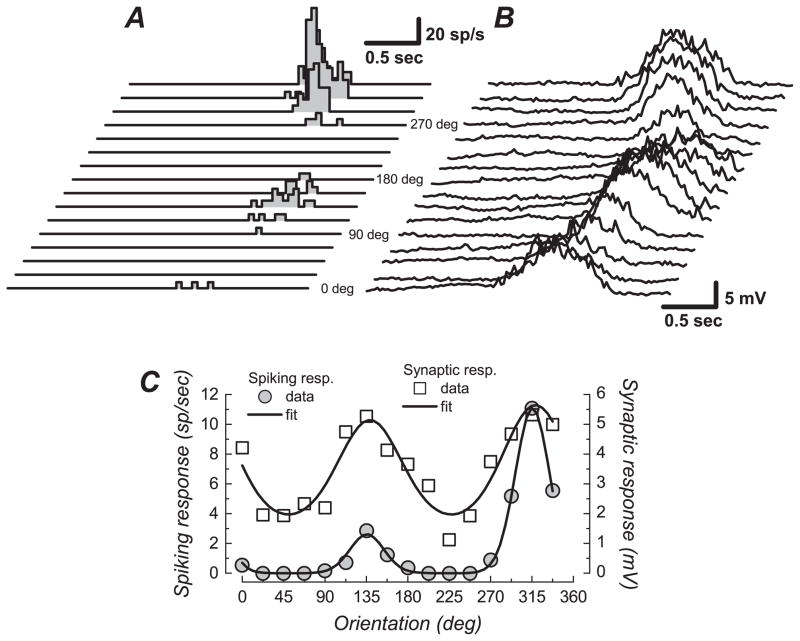Figure 2.
Orientation tuning in a sharply tuned FS cell. (A) Spike response PSTHs for the 16 drifting bar stimuli (8 unique orientations and 2 motion directions). (B) Membrane potential average for the same stimuli. Resting membrane potential was −71 mV. (C) Fit of Von Mises equations to the spiking response (mean firing rate, scale on left) and to the synaptic response (mean membrane potential change, scale on right). The spiking response was sharply tuned for orientation (HWHH: 22 deg) and strongly direction selective (DnSI: 23%). The synaptic response was less orientation and direction selective (HWHH: 42 deg, DnSI: 91%). Note the presence of a significant depolarization for all the stimulus orientations (RURA: 26%).

